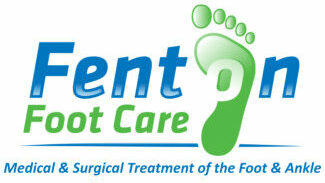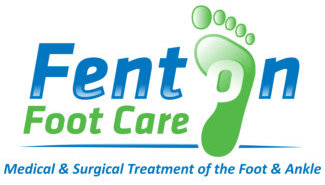Dr. Hirt what is the most common summer foot problems you see?
I would say by far the two biggest problems I see are:
Ingrown toenails and Planter Fasciitis (heel pain, heel spur). In this interview I will discuss ingrown nails and will discuss heel pain in next interview due to limited time.
What is an Ingrown Toenail?
An ingrown nail occurs when the toenail is pushing on or digging into the skin at the side or end of the toe. It typically starts as a mild redness, inflammation, or mild pain. Usually it will get worse with time and can become infected. If left untreated, in can progress into an abscess, infection, and in rare occasions serious bone infection requiring surgery. It is critical to get the nail evaluated as soon as possible to prevent complications.
What causes an Ingrown Nail?
Ingrown nails are caused by a combination of things. Some people have ingrown nails on and off their entire life. Typically due to the width or curvature of the nail it will chronically dig into the skin as it grows. With most foot and ankle problems it is common to “run in the family”, due to nail shape. Other times it can be caused by a tight fitting shoe adding pressure to the nail, or cutting the nail incorrectly. Once in awhile an acute injury to the toe can be the culprit. Fungus in the nail is another reason ingrown nails can start as fungus can thicken and deform the nail, which can cause pressure on the surrounding skin.
Can Ingrown Nails be prevented?
Yes. Once the toe and nail is evaluated we can make a plan to prevent and/or treat, depending on the cause of the ingrown nail. With nails that are excessively curved or wide, a simple procedure can be done to cure it. If due to incorrectly trimmed nails it may be just a matter of changing the way the nail is cut. Nails should be cut straight across to prevent leaving sharp edges in the corners. Additionally shoes should also be evaluated to make sure there is enough room for the toes and no excessive pressure is on the nails or surrounding skin.
Can Ingrown Nails be fixed?
Yes, both chronic and first time occurrences can be fixed easily. Typically a freezing agent is used to numb the toe up, painlessly. Once the toe is numb, the nail corner can be trimmed back with special instruments and the sharp edge of the nail can be removed with no discomfort. If it is a chronic problem, a quick painless procedure can fix it permanently. To permanently fix the nail corner a special medicine is applied to the “root of the nail”; the entire procedure takes less than 10 minutes and is pain free after the toe is numbed. This procedure only needs to be done once and it will fix the nail for a lifetime. After the procedure the nail looks normal and often other than a lack of pain most people cannot tell any procedure was done.
Do home remedies work?
For the most part no they will not. There are some old theories that cutting a triangle out of the center of the nail will relieve pressure on the corners. To make this work it would need to be about 75% of the nail and would be too painful to be a viable option. Another theory is to add a small piece of cotton under the corner of the nail. This may work in very limited situations only if the very end of the nail is pushing on the skin. I see many patients that try to dig the nail out themselves with limited success. I do not recommend this as it is possible to make things worse and even cause an infection.
Can an antibiotic cure an Ingrown Nail?
An antibiotic will resolve an infection only, not the root cause of the ingrown nail. The antibiotic alone will not solve the problem because the sharp edge of nail or excessive curved nail is still there. Usually once the antibiotic is stopped the problem returns as the nail deformity persists. To resolve the problem quickly and permanently a simple procedure can be done and then if needed the patient will be started on an antibiotic.
What should I do if I suspect an Ingrown Nail?
Myself and the other doctors in the office evaluate ingrown nails every day. We can give recommendations as to how severe it is and the treatment options available. Our office is very focused on treating each patient individually and working out a treatment plan that is best for each patient.
Many years ago my mother had the procedure done and she said it was painful?
As with most medical procedures there is constant improvement making them less painful and healing times quicker. The procedures we perform now have very limited discomfort and patients are always amazed how easy and painless it is. I (Dr. Hirt) have personally had the procedure done on my big toe and I can testify that it was easy and painless. At Fenton Foot Care we are focused on pain free treatments and long term relief.


